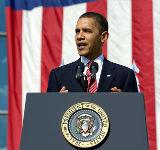

“Geronimo EKIA” - the Seal Team Six message relayed to the Situation Room in the White House confirmed to the President and his key staff that Osama Bin Laden had been killed in action.
The operation in Abbottabad may have been the defining difference in the US Presidential election. It might have just given the incumbent an executive edge over the ex Private Equity CEO who had a quite different relationship with firing people.
The death of Osama Bin Laden marked the culmination of years of dedicated and focused effort by the world’s leading superpower. In the end it was a small group of elite soldiers from the Red Squadron of the US Navy Seals that completed the mission.
It was a further vindication, some 70 years on, of David Stirling’s idea that a small elite force could play a decisive role in any conflict, an idea that in 1941 became the Special Air Service, the SAS.
Central to the success of Seal Team Six is the blueprint laid down by Stirling. SAS Selection is a rigorous and purposefully elitist process designed to eliminate all soldiers except the few that fulfil the SAS’s specific definition of excellence.
As Lofty Wiseman, a former SAS member, puts it, ‘Death is nature’s way of telling you that you’ve failed selection.’ Much of the focus of selection is an increasingly harsh set of physical tests for soldiers applying to join the Regiment.
Endurance speed marches, sleep deprivation, and even torture are the norm, physical fitness is a basic necessity, a must have, but mental toughness is the critical advantage.
SAS troopers are rarely the largest or most muscular but they are typically the most resilient and determined. Given the critical importance of the right attitude and mental toughness, SAS selection is deliberately designed to be first and foremost a mental battle, a contest few applicants can win.
In addition while seamless teamwork, the ability to act as a single unit, is the hallmark of both SAS and SEALs, the starting point for selection remains resolutely focused on finding the few individuals that fit the special forces’ specific definition of excellence.
‘Selection is designed rather to find an individualist with a sense of self-discipline than the man who is primarily a good member of the team,’ says Major Clarence ‘Dare’ Newell, ‘for the disciplined individualist will always fit well into a team when teamwork is required, but a man selected for teamwork is by no means always suitable for work outside the team.’
This individual test is – almost paradoxically – an important foundation of teamwork. Each member of the SAS is aware that his or her teammates have also passed the trial by fire.
Knowing that everyone else in the Regiment is also made of the right stuff ensures that, even in the fog of war and when it matters most in instances of life and death, they can rely completely on the capability and commitment of their colleagues.
The selection process has proved so successful that it has been adopted in various guises throughout the world, including with the team that landed in the compound in Abbottabad. Like the SAS, the SEAL team mantra is ‘training the best and discarding the rest’.
A relentless process of gruelling tasks, where one slip can cost you your place, designed to brutally expose the candidate’s true character and to separate the best from the rest, to find those with the right stuff that can make the vital difference.
If Bin Laden's death was a factor in Barack Obama's reelection, maybe David Stirling is one more person he should add to his campaign "thank you" list?
See the SAS story here
Leave a comment below or follow @Buildsuperteams on Twitter to share your opinion
Image Credit: The U.S. Army
A BETTER TEAM




